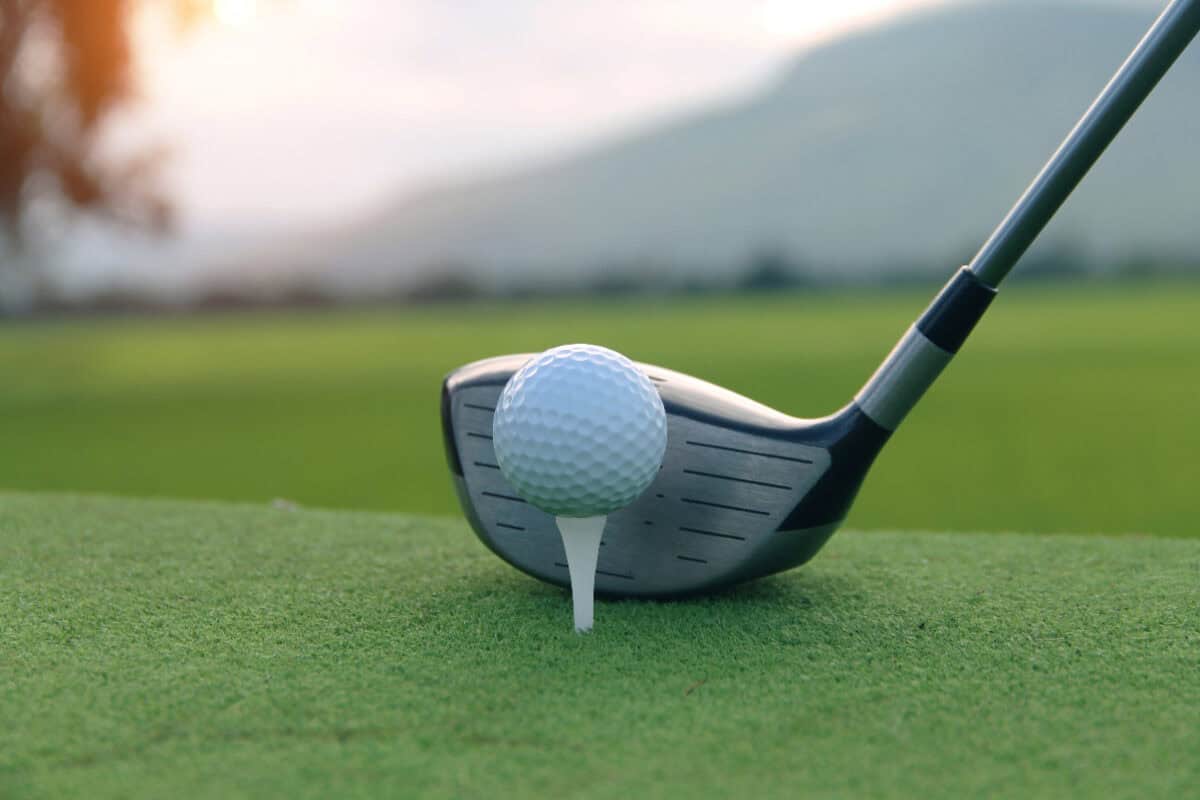What Are Golf Balls Made Of? The Science Behind
At first glance, golf balls appear deceptively simple – small, solid, white spheres. But inside the covers lies sophisticated core technology meticulously engineered to achieve optimal distance, accuracy, and feel.
Examining the components and materials used in modern golf ball construction reveals the science behind optimizing flight performance.

Early Golf Ball Materials
Golf ball materials have evolved substantially over the centuries. The very first golf balls dating back to the 1400s consisted of wooden spheres carved by hand.
Later came “feathery” golf balls, with feathers tightly packed and stitched inside a leather pouch then coated in paint.
Gutta Percha – The First Mass Produced Ball
In the mid-1800s, a rubbery sap from the gutta-percha tropical tree became the new preferred golf ball material.
Gutta-percha balls could be melted and molded into smooth, hard spheres. This enabled the first mass production of golf balls using machinery.
Gutta-percha quickly surpassed featheries due to the materials’ playability, consistency, and durability. These were the top golf balls until the early 1900s.
From Rubber to Balata
Next came natural rubber solid cores wrapped in another rubber layer, popular from 1900-1920.
Balls then transitioned to rubber cores with balata covers. Balata is a soft, flexible sap from the Sapodilla tree.
This offered increased spin and feel, becoming the standard cover material by the 1930s.
The Dawn of Manufactured Materials
In the late 1900s, new manufactured materials enabled further refinements in golf ball construction.
Surlyn, a hard resin, began replacing balata as the primary cover material. Various synthetic rubbers allowed optimizing core hardness and energy transfer.
Today’s High-Tech Materials and Construction
Modern golf balls utilize space-age materials precisely engineered for optimum flight performance. The key materials in different components include:
Outer Cover Materials
Ionomer (Surlyn)
The most common cover resin provides cutproof durability, distance, and lower spin.
Urethane
Higher friction urethane covers offer greater greenside spin and soft feel, but less distance and weather resistance.
Hybrid (Ionomer + Urethane)
Combines durable ionomer with urethane for moderate spin and feel. Used in many 3-4 piece balls.
Inner Core Materials
Synthetic Rubber
Typically a solid or high-energy (HE) rubber core provides an optimal combination of fast speed and lower compression. Varying rubber types fine-tune rebound energy.
Thermoplastic Resins
Resilient materials like HPF resins boost ball speed off the clubface for greater distance through optimized compression.
Gels and Fluids
Some cores utilize gels, fluids, or foam to reduce compression and suit moderate swing speeds below 100 mph.
Dual-Core Technology
Having distinct inner and outer core layers of different materials allows separate optimization of launch speed, low spin, and shot height.

Golf Ball Construction Innovations
Manufacturing and material advances allow fabricating golf balls tailored to swing speeds, spin rates, and preferences:
Multi-Layer Balls
Constructing balls with 2, 3, 4, or even 5 layers enables independent control of distance, launch, spin separation, and feel through the ball.
Variable Core Hardness
Graded compression can produce different firmness zones within the core to affect energy delivery. Typically softer center, firmer outer core.
Translucent Covers
Adding translucent white covers provides the appearance of a solid white ball but with improved visibility in dim conditions.
High Flex Covers
Very thin, highly flexible urethane covers maximize spin on wedge shots and provide a buttery soft feel on the greens
Seamless Construction
Innovative manufacturing minimizes seams so ball surfaces have no weak spots or interruptions in dimple coverage.
Modern golf ball materials and construction power maximum performance. Understanding the core components and how they affect flight helps find the right match for your game.
In advanced multi-layer balls, the chemical adhesion between layers is critical for stabilizing energy flow and compression through the ball.
Manufacturers use advanced adhesives and precision molding to create a tightly integrated spherical construction.
Delamination between layers can significantly reduce ball speed and performance.
Matching Materials to Swing Speed
The materials used in various components complement the mechanics of different swing speeds:
Slow Swing Speeds
Softer covers and low-compression cores allow energy transfer and ball compression at speeds under 90 mph.
Moderate Swing Speeds
Firmer ionomer blends promote distance. A moderate spin from hybrid covers provides control.
High Swing Speeds
Harder cores maximize energy and speed over 100 mph. Thin urethane covers add spin and feel.
Sustainability Initiatives
With environmental awareness growing, manufacturers are developing eco-friendly materials and production methods:
Recycled Polymers
Recycled synthetic rubber or resins reduce landfill waste and fossil fuel usage in producing new materials.
Water-Based Coatings
New water-based urethane and resin cover coatings are lower VOC and toxicity than traditional solvents.
Renewable Materials
Experimenting with covers derived from renewable corn, rice, or coconut oils may offer future sustainability benefits.
In summary, both new materials science and a deep understanding of physics allow maximizing contemporary golf ball flight dynamics through highly engineered constructions.
